From the President: Recounting the Camp Fire
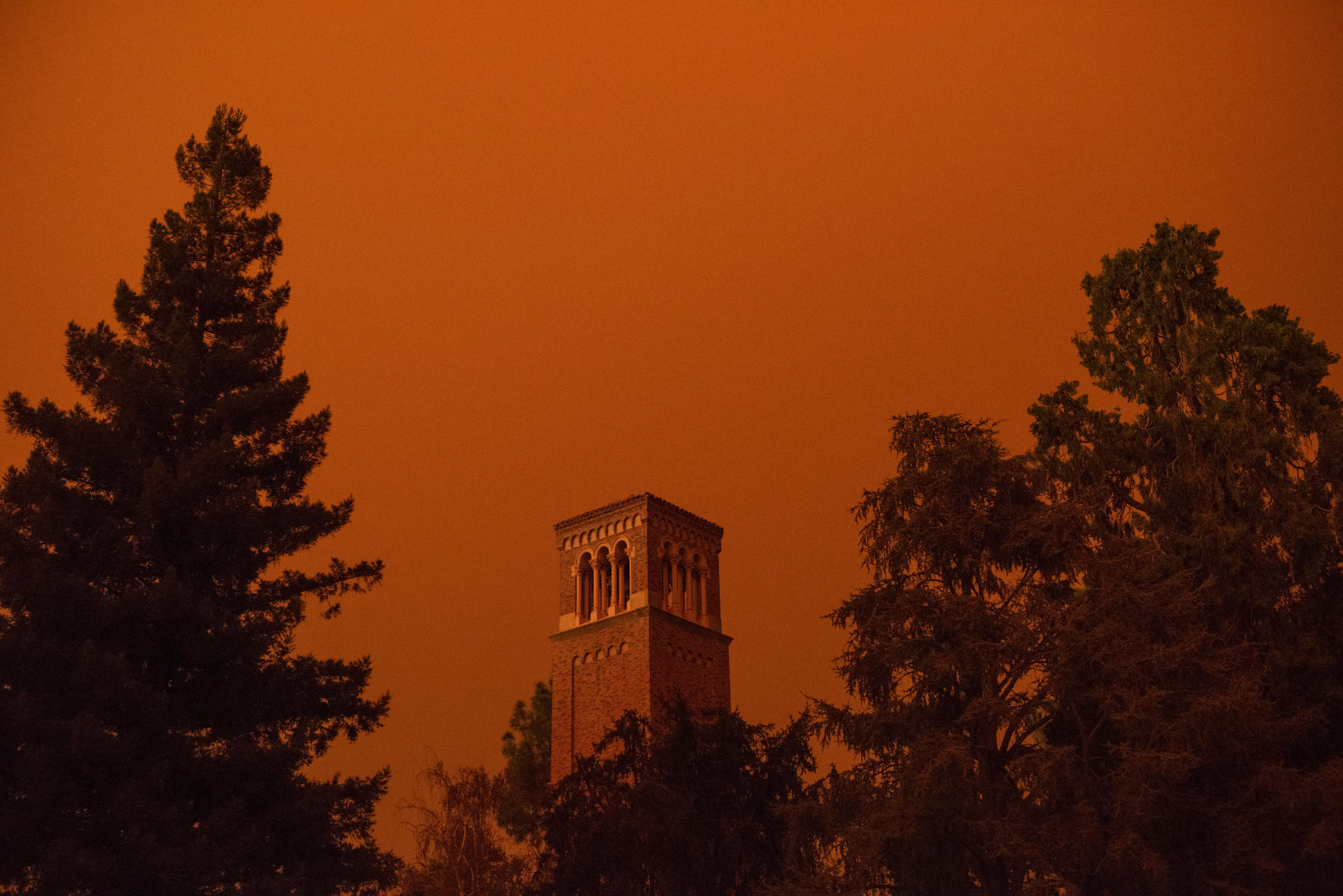
Heavy smoke creates an orange glow in the sky over Trinity Hall as the Camp Fire, which started near the community of Pulga in the Feather River canyon carries smoke over campus to create a red haze on Friday, November 9, 2018 in Chico, Calif. (Jason Halley/University Photographer/CSU Chico)
After a significant event like a natural disaster, we often reflect on where we were and what we were doing before and when it occurred. For recent fire survivors, I can only imagine how they will recall and consider their actions just before and during the Camp Fire once it started the morning of November 8, 2018. Moving at a pace of a football field per second, the wildfire destroyed the communities of Paradise, Magalia, and Concow within hours. It displaced nearly 50,000 people and killed 86, becoming the deadliest and most devastating wildfire in California history.
Just before I received word of the fire, my wife Linda and I were at the airport in Portland, leaving a successful alumni event held the night before and catching a plane to Reno for another alumni event to be held that day. My chief of staff, Brooke Banks, called me around 8:15 a.m. and informed me that a large, fast-moving fire was heading toward Paradise. I boarded the plane gravely concerned.
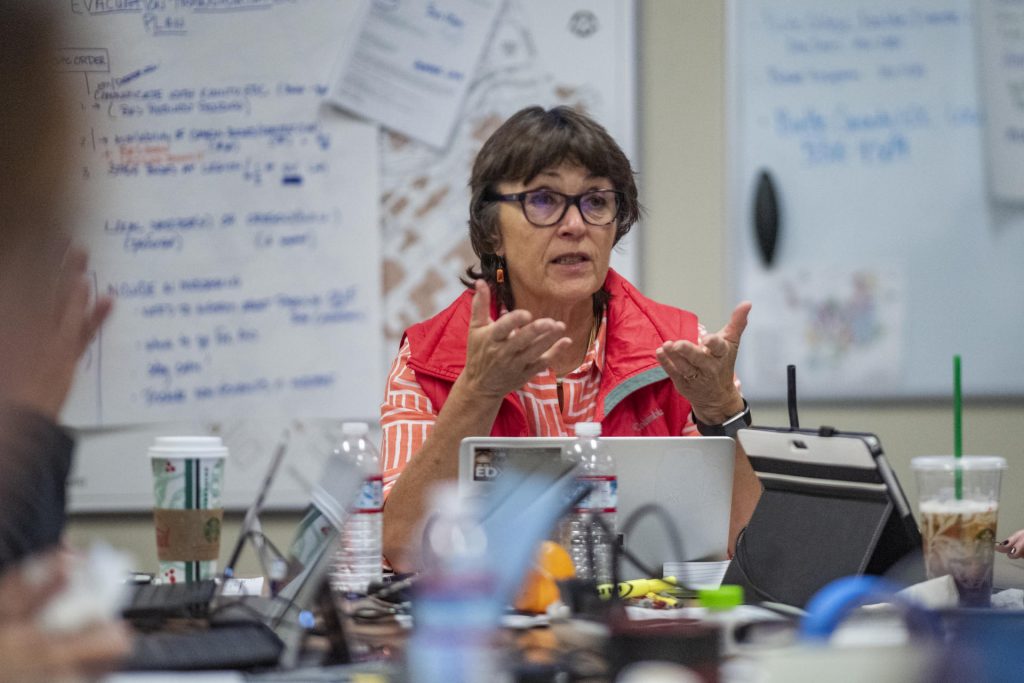
As soon as we landed 90 minutes later, I called Brooke only to learn the fire was raging out of control. Mandatory evacuation orders were in place. Traffic was jammed as people scrambled to flee. Many of our Chico State students, staff, and faculty who lived “up on the ridge,” along with thousands of others, were in a battle to save their families, pets, neighbors, and themselves. Together, we called the Chico State Emergency Operations Center into action.
The Emergency Operations Center team for this incident was composed of myself, the chief of staff, vice presidents, University Police chief, and leaders from Environmental Health and Safety, University Communications, Human Resources, and Facilities Management and Services. The team assembled in Kendall Hall and moved to the Emergency Operations Center (EOC) in the afternoon. I checked in by phone every couple of hours until I could join them early Friday morning, November 9.
The time between that first call from Brooke and my arrival in the EOC felt like eternity. It took us six hours to get from Reno to Chico because many roads were closed due to evacuation orders. Taking a circuitous route from Sacramento to Interstate 5, we finally entered Chico late Thursday night via Highway 32. The foothills glowed a fierce orange and red from the fire that raged. Armageddon appeared at full throttle.
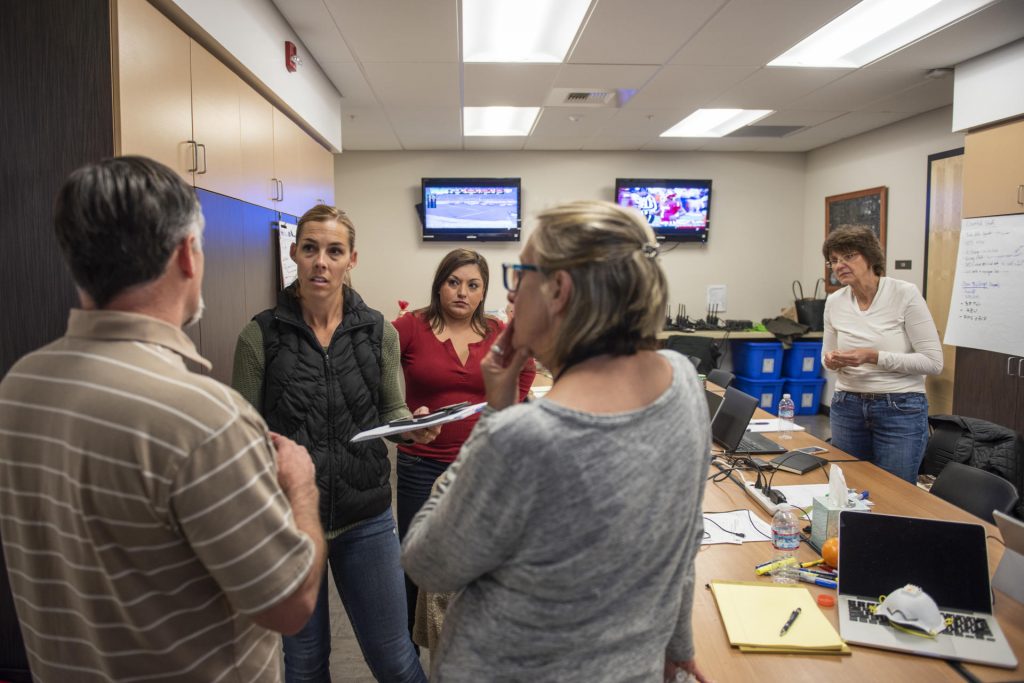
University Communications began to push out announcements immediately on November 8, beginning with a 9 a.m. message from Environmental Health and Safety. Messages went out continuously that day to inform the campus community. By 2:45 p.m., classes had been suspended for the remainder of the day, and at 5:05 p.m. an emergency closure was announced for Friday, November 9. The closure would eventually be extended for faculty and staff through November 23, due to the poor air quality and out of concern for those impacted by the fire.
For 18 days, the Emergency Operations Center monitored the fire and safety responses constantly, made key decisions regarding campus safety, gathered pertinent information about the needs of impacted students, staff and faculty, and communicated frequently to students, staff, faculty, parents, and alumni. After staffing the first 36 hours nonstop, the team often worked 14 hours or more a day, and Environmental Health and Safety and University Police staff monitored the situation each night.
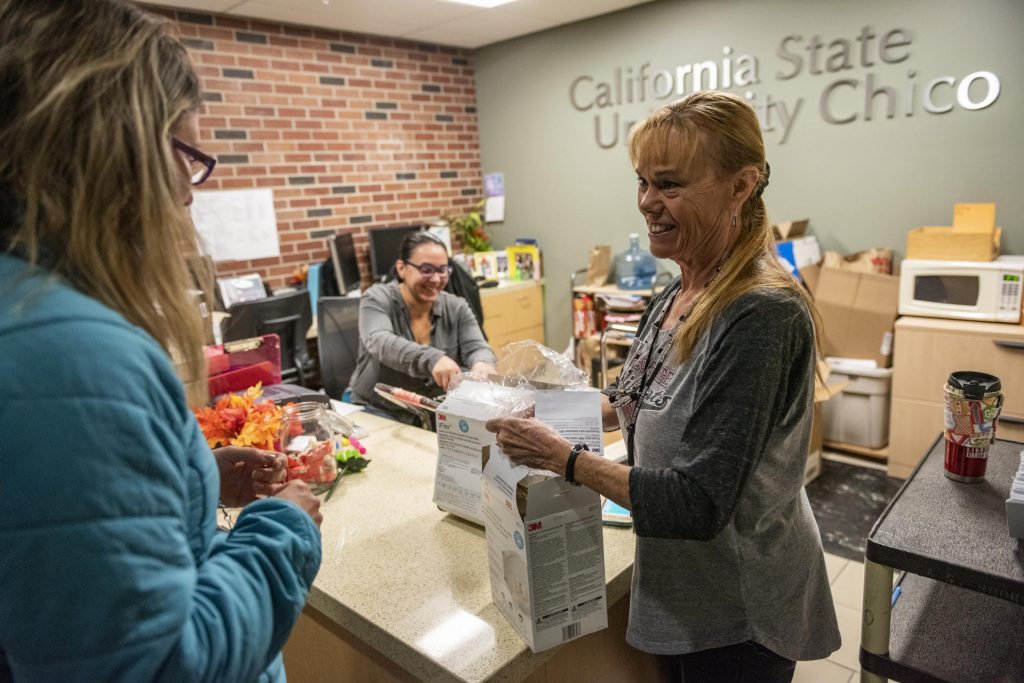
We asked for and received from the Chancellor’s Office assistance from the Critical Response Unit (CRU), which is composed of university police officers from other CSU campuses. The 26 officers stayed at the Warrens Center for nine days while they provided local communities and law enforcement with additional support.
Within days, we launched a needs survey that, while imperfect, provided us with essential information that we used to establish the Wildcats Rise Fire Recovery Fund for students, staff, and faculty impacted by the Camp Fire. Donations came pouring in from around the globe, enabling us to offer grants to hundreds of students and employees who were directly affected. The Wildcats Rise Fire Recovery Fund, at the time I wrote this column, stood at $640,000. As of December 18, a total of $510,000 in grants and loans has been distributed to 486 members of our community.
Additionally, the campus opened its doors to help, offering Laxson Auditorium to CalFire and the City of Paradise to hold community meetings. We sheltered 28 Red Cross volunteers in Shurmer and Acker Gyms, and provided showers for first responders during their shift changes. We placed into University Housing 17 students who had lost their places to live. And, we worked with the Chancellor’s Office and other campuses to pull together processes and information for staff and faculty regarding their leave options, payroll, and benefits.
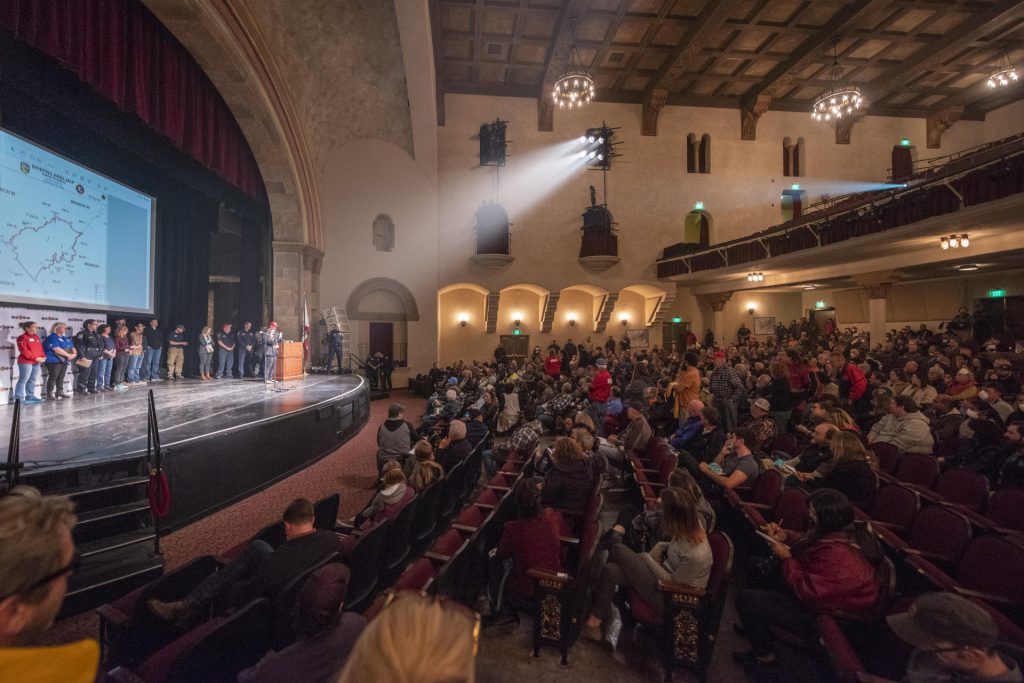
Outside the EOC, the vice presidents held meetings with their leadership teams. The University Information Center was staffed to answer myriad calls from students, parents, employees, alumni, and community members. Hundreds of N95 masks were distributed. The Hungry Wildcat Food Pantry kept its doors open, feeding roughly 100 students a day.
I tell you all of this to help you understand the remarkable efforts of the Emergency Operations Center, division leadership teams, and campus staff in organizing, planning, and implementing care and services for students, staff, and faculty who survived and were displaced by the Camp Fire. I know our work was but a single thread woven into a community tapestry of giving and support. To all who stepped up to help during this tragedy, I say thank you! I am incredibly proud of the overwhelming generosity, kindness, and support displayed by our campus and the community in this darkest of times.
The catastrophic event did not end when the Camp Fire was 100 percent contained on November 25. It will take years for families and communities to recover. The University will continue to take careful measure of the ways this disaster has disrupted the lives of our students, faculty and staff, and we will be there to support them.
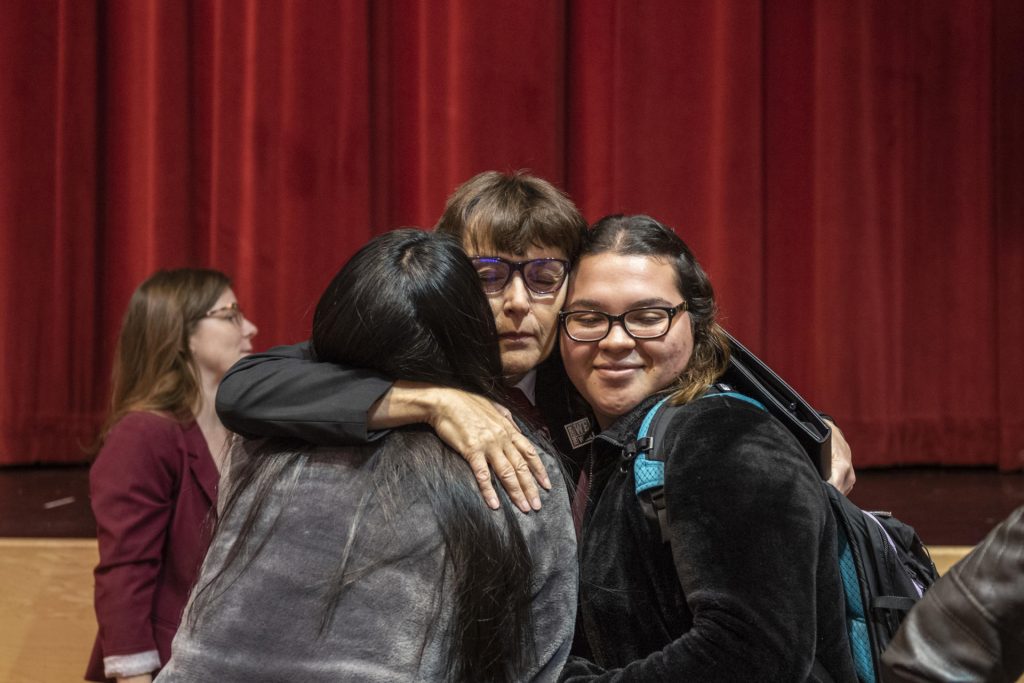
We also know this is a crucible moment for the region as we shift our focus to rebuilding Butte County. Since our campus is only 15 to 20 miles from the devastation, Chico State is positioned to serve as a leader in the renewal process. Therefore, I strongly invite faculty and staff to lend their expertise to community initiatives, and immerse our students into area redevelopment through hands-on learning, class projects, research, and volunteerism. Let’s help reimagine and rebuild our county by reaffirming our commitment to community service, innovation, scholarship, and sustainability. Together, we will rise.


